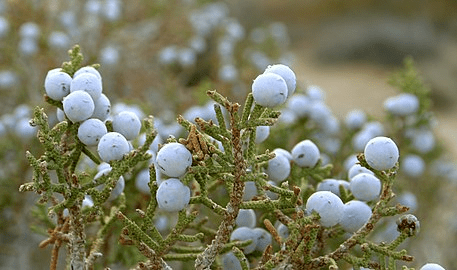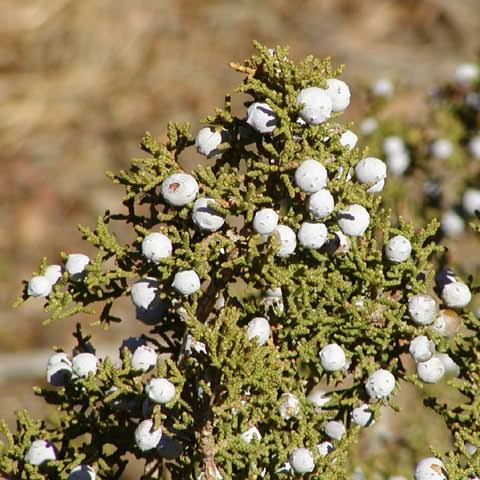Juniperus californica, commonly known as California Juniper, is a remarkable plant with a rich history of medicinal use. Indigenous communities in North America have revered this plant for centuries due to its potent healing properties. Today, modern research is shedding light on the various medicinal health benefits this unique species offers. In this comprehensive guide, we will explore the botanical description, traditional uses, and the emerging scientific evidence supporting the medicinal value of Juniperus californica.
The Botanical Description of Juniperus Californica
1. Life: Juniperus californica belongs to the Cupressaceae family and is an evergreen shrub or small tree. It typically reaches a height of 3 to 10 meters, displaying a distinctive blue-green foliage that characterizes junipers. The leaves are scale-like, arranged in opposite pairs or whorls of three.
2. Habitat: This species is native to the western United States, primarily found in arid regions, rocky slopes, and desert landscapes. It thrives in well-drained soils, making it a hardy plant capable of withstanding harsh environmental conditions.
3. Flowers and Fruits: Juniperus californica is dioecious, meaning it has separate male and female plants. The female plants produce small cones, which take about two years to mature. These cones are berry-like and range in color from green to brownish-black when ripe. They are an essential part of the plant, often used for their medicinal properties.
4. Chemical Composition: The medicinal properties of Juniperus californica are attributed to its rich chemical composition, including essential oils, flavonoids, tannins, and terpenes. These compounds contribute to the plant’s antioxidant, anti-inflammatory, and antimicrobial effects, making it a valuable resource in traditional medicine.
The Geographic Distribution of Juniperus Californica
1. Range and Habitat: Juniperus californica, or California Juniper, has a relatively limited geographic distribution. It is primarily found in the western United States, particularly in arid regions and rocky landscapes. This species thrives in environments with well-drained soils and can withstand the challenges of desert conditions. You can spot it in states like California, Nevada, and Arizona, where it plays a crucial role in the local ecosystem.
2. Ecological Role: Juniperus californica is an important component of the ecosystem in its native range. It provides shelter and food for various wildlife species. The berries of the California Juniper are a source of nourishment for birds and small mammals. Its presence in the arid landscape also helps prevent soil erosion, making it a valuable species in maintaining the ecological balance of the region.
The Chemical Composition of Juniperus Californica
1. Essential Oils: One of the key components of Juniperus californica is its essential oils. These oils contain compounds like alpha-pinene, myrcene, and limonene, which contribute to the plant’s aromatic properties. In traditional medicine, these essential oils are highly valued for their potential therapeutic effects.
2. Flavonoids: California Juniper also contains flavonoids, which are known for their antioxidant properties. These compounds play a role in neutralizing harmful free radicals in the body, potentially reducing the risk of chronic diseases.
3. Tannins: Tannins are present in various parts of the plant, including the berries. They are known for their astringent properties and have been used in traditional medicine for their potential to treat digestive issues.
4. Terpenes: Terpenes, another group of compounds found in Juniperus californica, contribute to the plant’s distinct fragrance. Some terpenes have antimicrobial and anti-inflammatory properties, which have piqued the interest of modern researchers.
The Harvesting and Processing of Juniperus Californica
1. Harvesting Juniper Berries: The berries of Juniperus californica are the most commonly used part of the plant for medicinal purposes. Harvesting typically occurs when the berries are ripe, which is usually in late summer or early fall. Harvesters carefully pick the berries by hand to ensure the highest quality.
2. Traditional Methods: In traditional medicine, the berries were often used fresh or dried. They could be brewed into teas or tinctures, or ground into a powder for various applications. The traditional knowledge of indigenous communities provided insights into the preparation and utilization of these berries.
3. Modern Processing: Today, Juniperus californica berries are also processed for various herbal products. They can be used as a flavoring agent in the food and beverage industry. The essential oils derived from the plant are used in aromatherapy and the production of cosmetics and perfumes.
4. Sustainability Considerations: As the demand for Juniperus californica products grows, it is essential to consider sustainable harvesting and processing methods. This ensures the continued availability of this valuable plant while respecting its ecological role and the rights of indigenous communities.
The detailed knowledge of the geographic distribution, chemical composition, and harvesting and processing methods of Juniperus californica contributes to a comprehensive understanding of the plant’s potential medicinal health benefits.
Read Also: 22 Medicinal Health Benefits Of Hierochloe odorata (Sweetgrass)
The Medicinal Health Benefits Of Juniperus Californica (California Juniper)

1. Respiratory Health: Juniperus californica has been traditionally used to alleviate respiratory issues. The plant’s essential oils have expectorant properties, helping to clear congestion in the airways. It may be useful in managing conditions like coughs, bronchitis, and asthma.
2. Digestive Aid: Juniperus californica has a long history of use in addressing digestive problems. The tannins in the plant can have an astringent effect on the gastrointestinal tract, potentially easing diarrhea and upset stomach.
3. Antioxidant Properties: The flavonoids in Juniperus californica have antioxidant properties, which can help combat oxidative stress in the body. This may have a protective effect on cells and tissues, reducing the risk of chronic diseases.
4. Anti-Inflammatory Effects: Terpenes found in the plant possess anti-inflammatory properties, which could be valuable in managing inflammatory conditions, such as arthritis or skin irritations.
5. Diuretic Action: Juniperus californica is known for its diuretic effects, promoting increased urine production. This can be beneficial in managing conditions like edema and high blood pressure.
6. Pain Relief: Some traditional uses of California Juniper include pain relief. It may be applied topically to soothe sore muscles or joints.
7. Antimicrobial Activity: The essential oils in Juniperus californica have demonstrated antimicrobial properties, making them potentially effective against various pathogens.
8. Skin Health: Juniperus californica has been used topically to address skin conditions, such as acne and eczema, thanks to its potential antimicrobial and anti-inflammatory properties.
9. Urinary Tract Health: The diuretic properties of Juniperus californica can aid in maintaining urinary tract health and reducing the risk of urinary infections.
10. Antifungal Action: The essential oils of this plant may possess antifungal properties, potentially assisting in the treatment of fungal skin infections.
11. Mental Health: In some traditional practices, Juniperus californica has been used for its calming and mood-enhancing effects.
12. Gastrointestinal Health: The tannins in the plant can help alleviate various gastrointestinal discomforts, including indigestion and bloating.
13. Wound Healing: The plant’s antimicrobial properties may support wound healing when applied topically.
14. Antiseptic Uses: Juniperus californica may be used as an antiseptic for minor cuts and abrasions.
15. Detoxification: The diuretic effect can aid in the body’s natural detoxification process by eliminating waste and toxins through urine.
16. Immune System Support: The plant’s antioxidants may contribute to overall immune system health.
17. Anti-Aging Properties: Antioxidants in Juniperus californica can help protect the skin from premature aging by reducing the effects of free radicals.
18. Weight Management: Some believe that the diuretic properties of Juniperus californica may assist in weight management by reducing excess water retention.
The Methods of Usage to Achieve the Provided Health Benefits Of Juniperus Californica (California Juniper)
1. Tea Infusion: To harness the respiratory and digestive benefits, a tea can be made by steeping the dried or fresh leaves and berries of Juniperus californica. This infusion can be consumed for respiratory relief and digestive support.
2. Topical Applications: For skin health, wound healing, and pain relief, the essential oils or infused oil can be applied topically to the affected area.
3. Tinctures: Tinctures are made by extracting the active compounds of the plant in alcohol or glycerin. They are convenient for a wide range of medicinal uses.
4. Steam Inhalation: Inhaling steam infused with Juniperus californica essential oil can help alleviate respiratory issues.
5. Culinary Uses: Some culinary dishes and beverages incorporate the flavor of Juniperus californica berries, offering a milder introduction to its potential benefits.
6. Aromatherapy: The essential oils are used in aromatherapy for their calming and mood-enhancing effects.
The Side Effects Of Using Juniperus Californica Medicinal Plant
1. Allergic Reactions: Some individuals may be sensitive to juniper and may experience allergic reactions when using juniper-based products. It’s important to perform a patch test before using topically.
2. Digestive Discomfort: In excessive amounts, Juniperus californica can lead to digestive discomfort, including stomach cramps and diarrhea.
3. Skin Sensitivity: Applying concentrated essential oil directly to the skin may lead to skin sensitivity, especially in individuals with sensitive skin.
4. Pregnancy and Nursing: Pregnant and nursing women should avoid using Juniperus californica products, as it may have adverse effects.
5. Kidney Health: The diuretic properties of Juniperus californica can put additional strain on the kidneys. Individuals with kidney issues should exercise caution.
6. Drug Interactions: Juniperus californica may interact with certain medications. It’s essential to consult a healthcare professional before using it, especially if you are on medication.
7. Avoiding Internal Use: While tea infusions are common, using Juniperus californica internally should be done in moderation and under guidance. Internal use may lead to adverse effects in some individuals.
8. Ethical Harvesting: When harvesting the plant, it’s crucial to do so sustainably, respecting the local ecosystem and the rights of indigenous communities.
Understanding the potential health benefits, methods of usage, and possible side effects of Juniperus californica allows individuals to make informed decisions regarding its application for their well-being.
Read Also: Crop Protection Measures in Organic Agriculture
The Scientific Research and Studies of Juniperus Californica

1. Antioxidant and Anti-Inflammatory Effects: Several studies have explored the antioxidant and anti-inflammatory properties of Juniperus californica. Research suggests that the plant’s flavonoids and terpenes may help reduce oxidative stress and inflammation in the body, potentially contributing to overall health.
2. Respiratory Benefits: Scientific investigations have looked into the respiratory health benefits of Juniperus californica. Some studies have demonstrated its potential in alleviating symptoms of respiratory conditions, such as bronchitis and asthma.
3. Antimicrobial Activity: Juniperus californica’s essential oils have been the subject of research due to their antimicrobial properties. These studies have shown that the plant’s compounds can effectively combat various pathogens.
4. Diuretic Action: The diuretic effects of Juniperus californica have been scientifically examined. Research suggests that it may be useful in managing conditions associated with water retention, such as edema and high blood pressure.
5. Traditional Knowledge Validation: Some scientific studies aim to validate the traditional uses of Juniperus californica within indigenous communities. These investigations help bridge the gap between traditional wisdom and modern science.
6. Essential Oil Analysis: Research has analyzed the chemical composition of Juniperus californica’s essential oils, providing insights into the compounds responsible for its distinct aroma and potential health benefits.
The Safety Precautions and Recommendations In Using Juniperus Californica Medicinal Plant
1. Allergic Reactions: Individuals with known allergies to juniper or related plants should exercise caution when using Juniperus californica. Perform a patch test before using it topically or internally.
2. Dosage and Moderation: When using Juniperus californica products, adhere to recommended dosages. Excessive use may lead to adverse effects, especially on the digestive system and kidneys.
3. Consultation: Before incorporating Juniperus californica into your health routine, it’s advisable to consult with a healthcare professional, especially if you are pregnant, nursing, or taking medications.
4. Skin Sensitivity: When applying essential oils topically, dilute them appropriately to avoid skin sensitivity or irritation.
5. Sustainable Harvesting: If you are harvesting Juniperus californica yourself, do so sustainably, respecting local ecosystems and the rights of indigenous communities.
6. Internal Use Caution: While tea infusions are common, it’s important to exercise caution when using Juniperus californica internally, particularly in large amounts.
7. Kidney Health: Individuals with kidney issues should be aware that the diuretic properties of Juniperus californica can put additional strain on the kidneys.
FAQs About Juniperus Californica Medicinal Plant
1. Is Juniperus californica safe for internal use?
Juniperus californica is generally safe when used internally in moderation. However, it’s essential to adhere to recommended dosages and consult a healthcare professional, especially if you are pregnant, nursing, or taking medications.
2. How can I use Juniperus californica for respiratory health?
You can use Juniperus californica by making a tea infusion from its leaves and berries. Inhaling steam infused with the essential oil can also be beneficial.
3. Are there any side effects associated with Juniperus californica?
Excessive use of Juniperus californica may lead to digestive discomfort, skin sensitivity, and other adverse effects. It’s crucial to use it in moderation.
4. Can I use Juniperus californica on my skin?
Yes, Juniperus californica’s essential oil can be applied topically for various skin-related purposes. However, it should be diluted appropriately to prevent skin sensitivity.
5. Is it safe to use Juniperus californica during pregnancy?
Pregnant and nursing women should avoid using Juniperus californica due to potential adverse effects. Consult with a healthcare professional for alternatives.
6. How should I perform a patch test for allergies?
To perform a patch test, apply a small amount of the product (oil or infusion) to a small area of your skin and wait for 24 hours. If there is no adverse reaction, it’s likely safe to use.
7. Can Juniperus californica help with weight management?
Some believe that the diuretic properties of Juniperus californica may assist in weight management by reducing excess water retention.
8. What is the ecological impact of harvesting Juniperus californica?
Sustainable harvesting practices are crucial to minimize the ecological impact. Harvesting should be done with respect for the local ecosystem and the rights of indigenous communities.
9. Can Juniperus californica essential oil be used for aromatherapy?
Yes, Juniperus californica essential oil is used in aromatherapy for its calming and mood-enhancing effects.
10. Are there any known drug interactions with Juniperus californica?
Juniperus californica may interact with certain medications. Consult a healthcare professional before using it, especially if you are on medication.
11. How can I use Juniperus californica for pain relief?
Juniperus californica can be applied topically to soothe sore muscles or joints.
12. Can Juniperus californica be used to treat skin conditions like acne?
The antimicrobial and anti-inflammatory properties of Juniperus californica may make it helpful for skin conditions, but individual results may vary.
13. How does Juniperus californica support immune system health?
Juniperus californica’s antioxidants may contribute to overall immune system health by helping protect the body from oxidative stress.
14. Is Juniperus californica effective in reducing inflammation?
Some studies suggest that Juniperus californica’s terpenes possess anti-inflammatory properties, potentially assisting in managing inflammation.
15. Can I use Juniperus californica for urinary tract health?
The diuretic properties of Juniperus californica may aid in maintaining urinary tract health and reducing the risk of urinary infections.
16. What are the traditional uses of Juniperus californica?
Traditional uses include addressing respiratory issues, digestive problems, and skin conditions. It has also been used for its calming and mood-enhancing effects.
17. Can Juniperus californica help with wound healing?
Some use Juniperus californica topically for its potential antimicrobial properties, which may support wound healing.
18. What is the shelf life of Juniperus californica essential oil?
The shelf life of essential oil may vary, but if stored properly in a cool, dark place, it can last for several years. Check for any signs of spoilage, such as changes in scent or appearance, before use.
Read Also: Benefits of Practicing Commercial Farming

